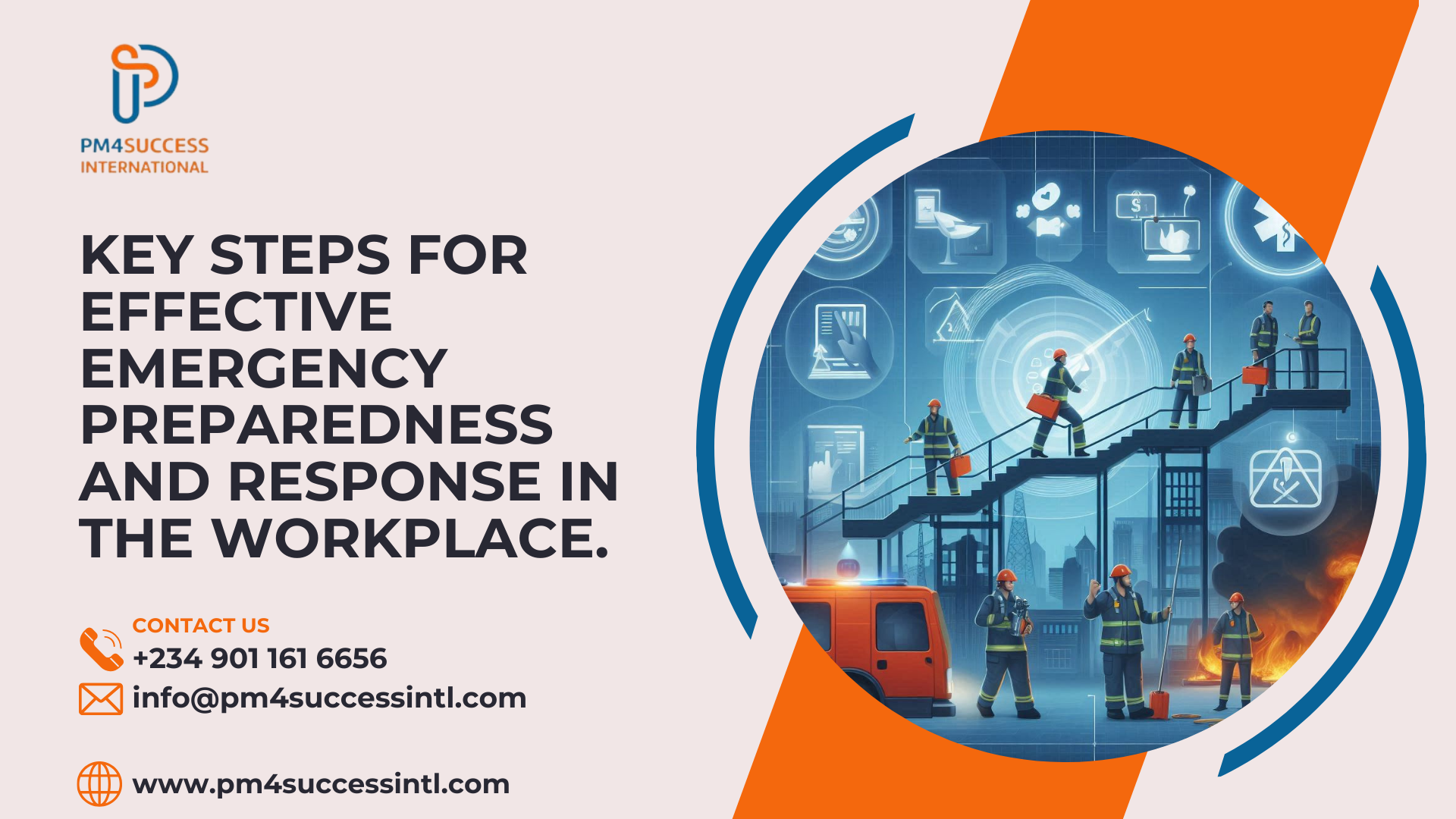
Key Steps for Effective Emergency Preparedness and Response in the Workplace.
- April 30, 2024
Emergency preparedness and response in the workplace are critical for ensuring the safety and well-being of employees during crises. Here are some key steps and considerations for effective emergency preparedness and response:
1. Plan Ahead: Developing a comprehensive emergency response plan tailored to your workplace's specific needs and potential hazards is paramount. This plan should include evacuation procedures, shelter-in-place instructions, and a communication strategy to inform employees of emergencies.
2. Risk Assessment: Identifying and assessing potential emergency scenarios and the risks they pose to your workplace is essential. This includes natural disasters like earthquakes, floods, or hurricanes, technological incidents such as power outages or equipment failures, and human-caused events like fires or chemical spills.
3. Communication: Establishing clear and effective communication channels to relay critical information quickly during an emergency is vital. This includes installing alarms, utilizing public address systems, and implementing emergency notification systems that can reach all employees promptly.
4. Training and Drills: Conducting regular training sessions and emergency drills ensures that all employees are familiar with the emergency response plan and know how to react appropriately in different scenarios. Training should cover procedures for evacuations, first aid, CPR, and the proper use of fire extinguishers or other safety equipment.
5. Resources and Equipment: Ensuring that the necessary resources and equipment, such as emergency kits, first aid supplies, and personal protective equipment, are readily available and well-maintained is crucial. Regular inspections and restocking of emergency supplies should be conducted to ensure readiness.
6. Coordination with Local Authorities: Collaborating with local emergency services and government agencies is key to aligning your emergency response plan with community plans and resources. Establishing relationships with these entities can facilitate a coordinated response in the event of a large-scale emergency.
7. Support and Recovery: Providing support to employees during and after an emergency is essential for their well-being and resilience. This may include offering psychological first aid, access to counseling services, and resources for recovery and returning to work.
By implementing these steps, organizations can create a safer environment for their employees and be better prepared to handle emergencies effectively. It's important to review and update the emergency response plan regularly to ensure it remains relevant and effective in addressing evolving risks and circumstances.